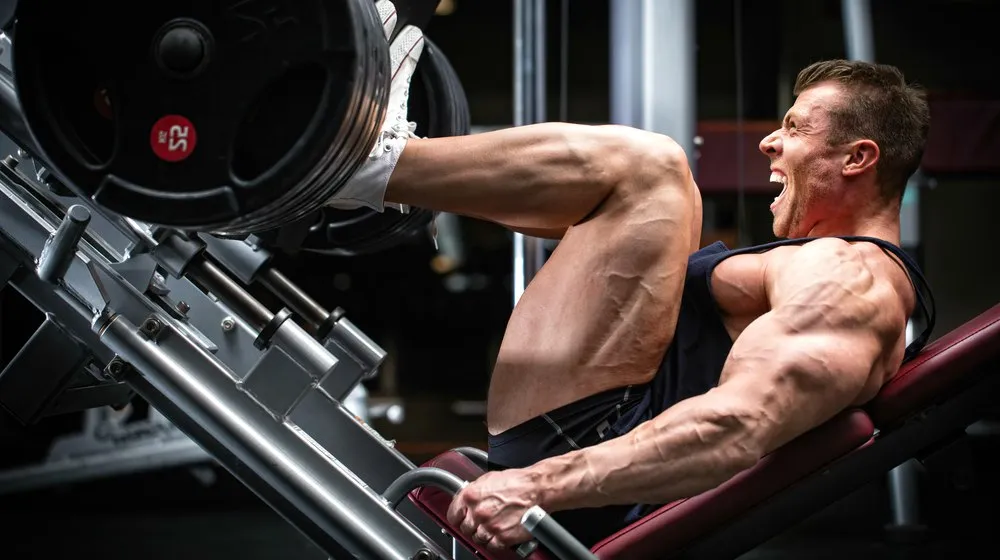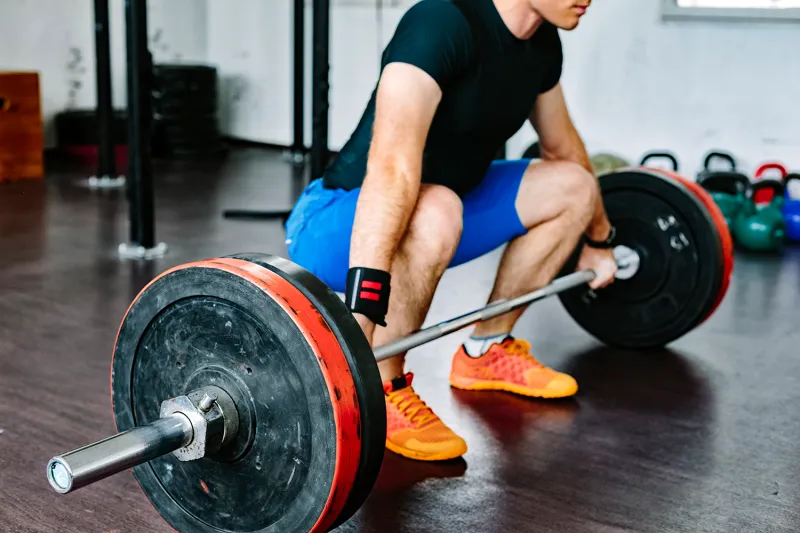Quad Training Tips for More Sweep and Thickness: Master the Art of Leg Dominance
In bodybuilding, legs separate the amateurs from the elite. You can hide arms under a hoodie, but if your quads aren’t popping in shorts, people notice.
More importantly, the outer quad sweep is what gives that signature X-frame physique—narrow waist, wide shoulders, and flaring thighs. It’s the mark of a complete bodybuilder.
But many lifters struggle with quad development, especially achieving that outer sweep and dense thickness through the mid-thigh.
Whether you’re looking to win a show or just fill out your jeans with authority, this guide will give you everything you need to build bigger, rounder quads—starting today.
What Is the Quad Sweep?
The term “quad sweep” refers to the outer curvature of the quadriceps, particularly the vastus lateralis muscle.
When fully developed, it gives the thigh a pronounced outward arc when viewed from the front or side. Think Tom Platz, Branch Warren, or current IFBB pros like Chris Bumstead and Urs Kalecinski—massive outer quads that flare like tree trunks.
Anatomy of the Quads
The quadriceps consist of four muscles:
- Vastus Lateralis: Outer quad—responsible for the “sweep”
- Vastus Medialis: Inner quad—forms the teardrop near the knee
- Vastus Intermedius: Lies beneath the rectus femoris, contributes to overall mass
- Rectus Femoris: Central quad—runs down the middle and assists in hip flexion
The vastus lateralis is the key player when it comes to sweep, and hypertrophy here comes down to targeted form, angle manipulation, and exercise selection.
Is Quad Sweep Genetic?
This is a common question—and yes, genetics absolutely influence quad sweep. Some guys are born with insertions and limb lengths that make quad development easier.
If your vastus lateralis inserts lower or you have shorter femurs, you may naturally have better sweep.
But here’s the real talk from one lifter to another: Genetics are not a sentence. They’re a starting point.
You might not become the next Tom Platz, but through strategic training, controlled tempo, and brutal consistency, you can dramatically improve your sweep—even if it’s not “in your genes.”
How to Get More Quad Sweep: Strategic Training Tips
Here’s where science meets the sweat. If your outer quads are lagging, you need to adjust angles, foot positioning, range of motion, and exercise order. Here’s how.
Prioritize Quads First in Your Training Week
If your sweep is weak, train quads first—either on leg day or as a standalone quad-focused session. This ensures maximum intensity and recovery focus.
Sample Quad Week Split:
- Monday: Quad-dominant leg day
- Friday: Posterior chain and hamstring-focused leg work
Foot Placement Matters
Tweaking your stance changes which part of the quad is targeted:
- Narrow stance, toes slightly in: Emphasizes vastus lateralis (outer quad)
- Wide stance, toes out: Hits vastus medialis (teardrop)
Use a shoulder-width or narrower stance on hack squats, leg presses, and Smith machine squats to shift emphasis toward the sweep.
Use Heels-Elevated Squats
Elevating your heels—via weight plates, slant boards, or lifting shoes—places more tension on the quads by reducing hip involvement. Combine that with a narrow stance for outer quad emphasis.
Try this: Goblet squats or front squats with heels elevated. 3–4 sets of 10–12, slow descent, deep stretch.
Add Hack Squats with Controlled Eccentrics
Hack squats are arguably the best machine to target the outer sweep—especially with a narrow stance and deep ROM.
Pro Tip: Descend slowly (3-4 seconds), pause in the hole, then explode up. This time-under-tension crushes the vastus lateralis.
Use Single-Leg Movements to Fix Imbalances
Unilateral work allows you to bias your weaker side and develop better mind-muscle connection.
- Bulgarian split squats
- Single-leg leg press (narrow stance)
- Step-ups with a forward lean
These improve quad activation while correcting strength imbalances that might be holding your sweep back.

How to Add Thickness to Your Quads
The sweep makes the silhouette, but thickness is the meat—that dense, front-loaded size that fills out shorts and demands attention from all angles.
Front Squats Over Back Squats
Back squats are great, but front squats maintain a more vertical torso, placing greater tension on the rectus femoris and vastus intermedius—thickening the mid-thigh area.
If back squats are your main leg builder and your quads still lag, it’s time to rotate in front squats for 6–10 weeks.
Leg Extensions with a Twist
Standard leg extensions are good—but advanced lifters benefit from these tweaks:
- Toes slightly turned in to target outer quads
- Pause at peak contraction
- Slow negatives for increased time-under-tension
Do these at the end of your workout for 3–4 sets of 15–20 reps. You’ll walk out with pumped and trembling thighs.
Use Drop Sets and Rest-Pause Sets
High-intensity techniques bring in more fibers, especially when you’re chasing hypertrophy.
- Leg press drop sets: Do a heavy set of 8–10, drop weight, go to failure, repeat 2–3 drops.
- Rest-pause squats: Pause for 10–15 seconds between reps when failure is close.
These methods bring the kind of pain that builds muscle—fast.
How to Increase Quad Stamina
It’s not enough to just look strong. If your quads gas out halfway through your session, you’re leaving gains on the table. Here’s how to build quad endurance:
High-Rep Sets
Use sets of 15–25 reps on leg presses, extensions, and bodyweight squats to build mitochondrial density and fatigue resistance.
Shorter Rest Periods
Reduce rest time to 30–45 seconds between isolation sets. This forces your muscles to adapt by improving local endurance.
Sled Pushes and Walking Lunges
These mimic real-world athletic movement while frying the quads. Try:
- 3–5 rounds of 20-meter sled pushes
- 3 sets of walking lunges for 20–30 steps (with or without weight)
This burns fat, builds stamina, and increases functional leg capacity.
Bodyweight Quad Finishers
After your main quad lifts, add a high-rep finisher:
- Wall sits for 60–90 seconds
- Sissy squats
- Jump squats for 20–30 seconds
These will challenge your mental grit while building true muscular endurance.
Sample Quad Sweep-Focused Workout
Warm-Up:
- 5–10 minutes cycling
- Bodyweight squats, dynamic stretches
Main Workout:
- Heels-Elevated Front Squats – 4 sets of 8–10
- Hack Squats (Narrow Stance) – 4 sets of 10–12 (last set drop set)
- Leg Press (Feet Low and Close) – 3 sets of 15–20
- Walking Lunges – 3 sets of 20 steps
- Leg Extensions (Toes In, Pause at Top) – 3 sets of 15–20
- Wall Sit Finisher – 3 rounds of 60 seconds
Final Takeaways for Lifters of All Levels
✅ Beginners:
- Focus on form first. Use moderate weights with a controlled tempo.
- Prioritize machines (leg press, leg extension) to build a mind-muscle connection.
- Train quads 1–2x per week.
✅ Intermediates:
- Introduce variation: split squats, heel elevation, stance changes.
- Track tempo, depth, and volume. Don’t just chase weight.
- Hit quads from multiple angles every session.
✅ Advanced Lifters:
- Use intensity techniques: drop sets, pauses, extended sets.
- Rotate variations every 4–6 weeks to avoid adaptation.
- Prioritize recovery—your quads can take a beating but need fuel and rest to grow.
Closing Thoughts from a Bodybuilder
The quad sweep isn’t built overnight—it’s carved through months and years of precision training, brutal consistency, and smart programming. Yes, genetics play a role. But in bodybuilding, effort almost always beats excuses.
Train with intent. Control your tempo. Obsess over execution. The sweep will come—not just as a reward for your training, but as proof of your discipline.
Want legs that turn heads? Start with the sweep, but don’t forget the journey includes every rep, set, and drop of sweat.
No shortcuts—just smart, savage training.




